Click on images to enlarge

habit (Photo: Sheldon Navie)
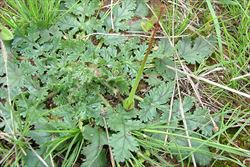
deeply-lobed lower leaves (Photo: Sheldon Navie)
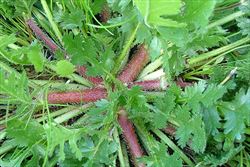
close-up of hairy stems and leaf stalks (Photo: Sheldon Navie)
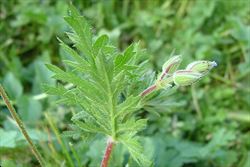
upper leaves and flower buds (Photo: Sheldon Navie)
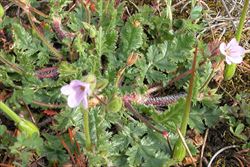
flowers and immature fruit (Photo: Greg Jordan)

close-up of flower from side-on (Photo: Greg Jordan)
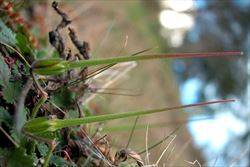
close-up of immature fruit (Photo: Greg Jordan)

young plant (Photo: Sheldon Navie)
Scientific Name
Erodium botrys (Cav.) Bertol.
Synonyms
Geranium botrys Cav.
Family
Geraniaceae
Common Names
big heron's bill, big heron's-bill, broadleaf filaree, corkscrews, crane's bill, filaree, long beaked filaree, long heron's-bill, long storksbill, longbeak stork's bill, shiny leaf storksbill, stork's bill, storksbill, wild geranium
Origin
Native to southern Europe (i.e. Greece, Italy, Yugoslavia, France, Portugal and Spain), the Madeira Islands, the Canary Islands, northern Africa (i.e. northern Algeria, Morocco and Tunisia), and western Asia.
Naturalised Distribution
Widely naturalised in southern Australia (i.e. in New South Wales, the ACT, Victoria, Tasmania, many parts of South Australia, the southern parts of Western Australia and the southern parts of the Northern Territory.
Also naturalised in temperate Asia, New Zealand, the USA and the southern parts of South America.
Notes
Long storksbill (Erodium botrys ) is only widely regarded as an environmental weed in Victoria, thought it is widespread as a weed of native pastures, open woodlands and grasslands in the southern parts of Australia. This species is thought to pose a serious threat to one or more native plant communities in Victoria and has been recorded in numerous conservation areas in this state (e.g. Boonderoo Nature Conservation Reserve, Kotta Nature Conservation Reserve, Moodemere Nature Conservation Reserve, Roslynmead Nature Conservation Reserve and Organ Pipes National Park).
However, it is also present in conservation areas in South Australia (e.g. Angove Conservation Park, Aldinga Scrub Conservation Park, Sandy Creek Conservation Park, Cleland Conservation Park and Para Wirra Recreation Park) and is a common weed of native woodlands in the wheatbelt region of south-western Western Australia (i.e. between Geraldton and Albany).

